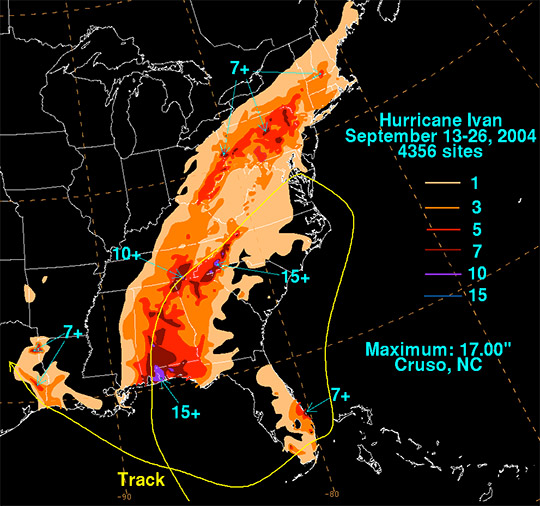Flooding
Floods are one of the most common hazards in the United States, and may occur during any month of the year in North Carolina. A flood is defined when water overflows onto land that is normally dry. Not all floods are alike; they happen on different scales of space and time. The main types of floods are:

Source: Hurricane Ivan | WikiMedia
Did You Know?
The state record for 24-hour precipitation of 22.22” has stood since 1916. However, a rainfall total of 18.00 inches in Southport, NC (Brunswick County) from Hurricane Floyd in 1999 came close to challenging the record. The same area that was impacted by the Flood of 1916 saw a similar event when heavy rains from Hurricanes Frances and Ivan moved over western North Carolina in 2004.